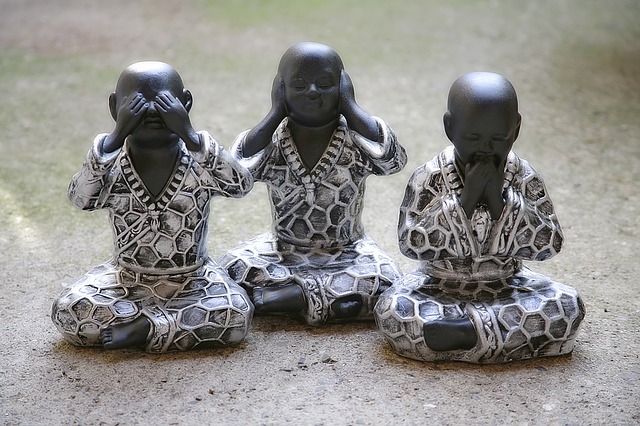“I just can’t keep a regular practice,” she said.
I felt frustrated, and my heart reached out in compassion at the familiar phrase. Whether I sit next to the meditation bowl as the teacher, or as a student in the back of a crowded circle of cross-legged humans, the resigned, self-deprecating emotions are the same.
It could be a male voice, or a female; young, or old:
“I went on vacation and didn’t meditate.”
“I hit the snooze button until I have barely enough time to get to work in the morning.”
“I couldn’t be still with myself.”
Sometimes I add my personal conflict to the chorus. For me, every morning is a decision between my compulsion to check my email and my desire to sit in meditation. I know the one I choose first will set the tone for the rest of my day, and I still struggle.
One technique that has helped me and my students is digging deeper than the “should” answers and uncovering the core reasons our body craves the present moment awareness that a meditation practice offers. For some students who are used to the 140 character, quick fix, clickbait, skimming-not-reading culture of social media, the results are surprisingly profound.
We begin by asking a simple question patiently and lovingly, over and over.
We start by finding a partner. Seated comfortably, we make eye contact and one partner asks “Why do you want to meditate?” When the other partner is done answering, the listener says “Thank you. Why do you want to meditate?” The conversation continues for three to four minutes. Answers deepen from “relieve stress” to “get in touch with my intuition,” “live from my heart-space” and “understand my emotions, not just control them.”
For me, the answer was a long-lost memory. I became aware of the sights and sounds of a meditation session my mother took me to in grade school while she was battling stage four breast cancer. My soul was calling for a deeper exploration of that experience—an exploration that came to fruition when I was diagnosed with skin cancer the following year and was able to lean on meditation during the entire process from biopsy to surgery to living with a scar on my face.
What happens after the partner exercise?
When planning our day, instead of adding “meditation” to our schedule, we create time to live from our heart-space. Exploring the shift in meaning and importance makes a difference in how we see our meditation practice.
As I grow deeper in my meditation practice, I am realizing that sometimes the morning struggle itself is of value. I realize with closed eyes that I am awake. A moment later, I can feel my compulsion to check my email in the morning. It feels like a quickening of the heart. My brain comes “on line” and my heart speeds up, the result of a spurt of adrenaline or some such shocking hormone. My thoughts become poised to read and react, to feel excited or offended or irritated. My other option is to choose to stay present to the dawn, to the palm trees shimmering in the wind beyond the balcony, and to my breath.
Among my fellow meditators, the elusive goal is having such a rock-solid meditation practice that there really is no choice and no struggle.
But what if we considered that the struggle itself is strengthening us?
That potent choice each morning is a blessing, not something to reduce or belittle by insisting that consistent enthusiasm for meditation is our goal.
After all, the first gift of meditation is the awareness that we have a choice.
Sometimes the phone is in my hands and the email opened up before I realize I’m awake. I too cannot keep a regular practice, but can I learn to cherish the power of being able to choose every day, again and again, whether or not to meditate?
I believe I can. I believe we all can.
~
Relephant Read:
For a Personal Revolution, we Must Confront our Inner Extremist.
~
Author: Kathleen Lisson
Image: Pixabay; Jörg Schubert/Flickr
Apprentice Editor: Tess Drudy; Editor: Toby Israel
~

 Share on bsky
Share on bsky







Read 7 comments and reply